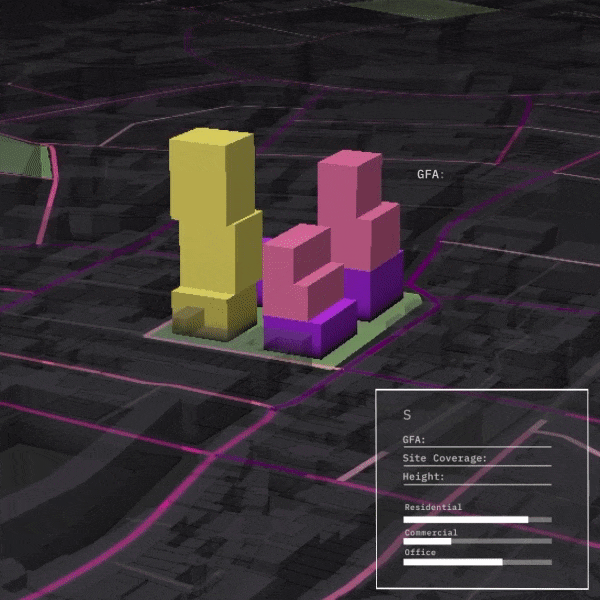
Leading Innovation in Spatial Analytics and AI-Generative Design
We build category-leading software that empowers design, consultants, and planning leaders to excel in project delivery and urban development by leveraging the latest technology.

The DBF Engine
Our category-leading technology is the DBF Engine - a powerful enterprise platform featuring advanced AI algorithms and data integrations to enable generative design and spatial analytics.
Spatial Analytics
Validate your project across scales using multi-source data and DBF’s proprietary KPI’s.
AI Generative Design
Generated scenarios by guiding advanced novelty and feasibility algorithms based on your unique requirements.
Intelligent Optimization
AI-driven optimization for complex calculations to enhance efficiency and reduce costs.
"Our mission is to create better cities, using insights and evidence based analytics in combination with generative engines for better planning.
While we are currently working on complex facility and masterplanning projects we see this expand to existing building stock and urban spaces."
Deliver projects better, faster and more intelligently
15
%
| Savings
Reduce project capital and operating cost by 15%.
Boost your top-line revenue and attract a larger client base.
50
%
| Efficiency
Accelerate project design cycles time by 50%.
Improve bottom-line, reduce costs by improving efficiency with smart automation.
75
%
| AUTOMATION
Streamline BIM production by 75%.
Connect directly to minimize errors and improve efficiency.
AI Solutions for the toughest projects — from facilities to complex urban developments
Whitepapers
Blog
We provide extensive project contextual data, encompassing maps, satellite imagery, 3D terrain models, building information, road networks, land use, social media data, and local weather station-based wind and solar data. Additionally, we offer flexibility to integrate proprietary data into your solution, either on-premises or via a hybrid configuration, seamlessly integrated with our spatial analytics.
Learn more about our data sources
We employ a two-step design generation process. Initially, we aid users in efficiently exploring the design space using a novelty search algorithm and our proprietary feasibility indicators. Subsequently, our advanced AI optimization algorithms enhance input designs according to user criteria. Our AI is tailored to different building types based on client specifications, ensuring customized and optimized designs.
DBF integrates seamlessly with BIM software via our proprietary middleware, DBF Hub. This allows you to stream projects directly from the DBF online platform to your desktop BIM software or Enterprise Cloud. DBF Hub supports Revit, Archicad and ESRI connections.
Absolutely, DBF provides custom development services tailored to your unique needs. Whether you require specialized integrations, customized features, or specific solutions, our expert team can work closely with you to develop and implement these services effectively.
DBF offers flexible usage-based pricing, allowing you to pay for our services based on your actual usage. This means you'll be charged according to the specific features, resources, or services you utilize, ensuring How does DBF's usage-based pricing work?








